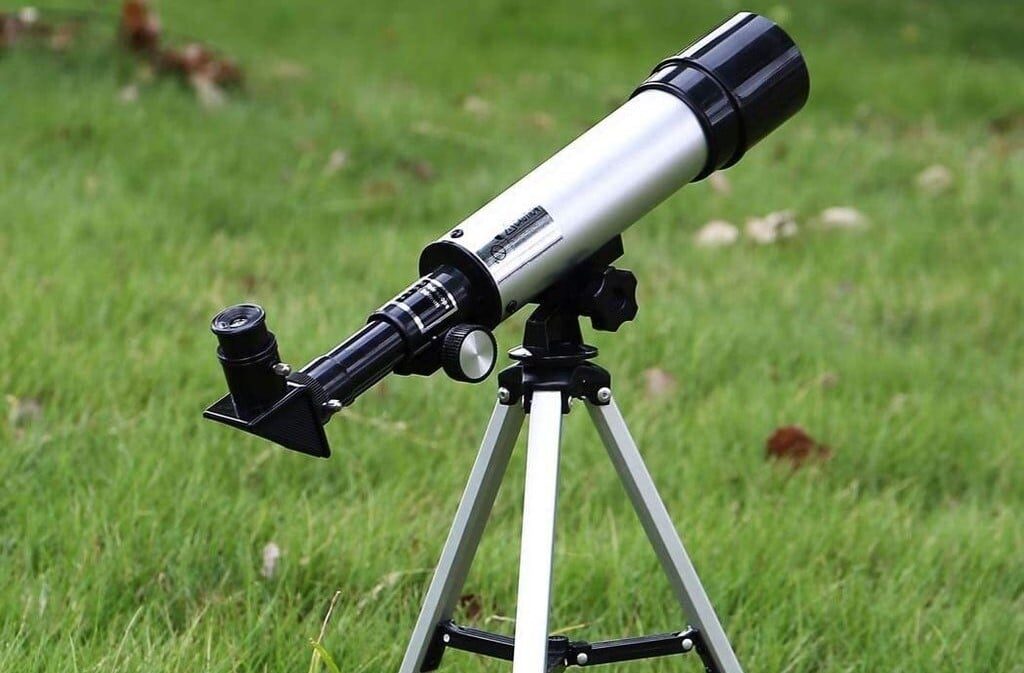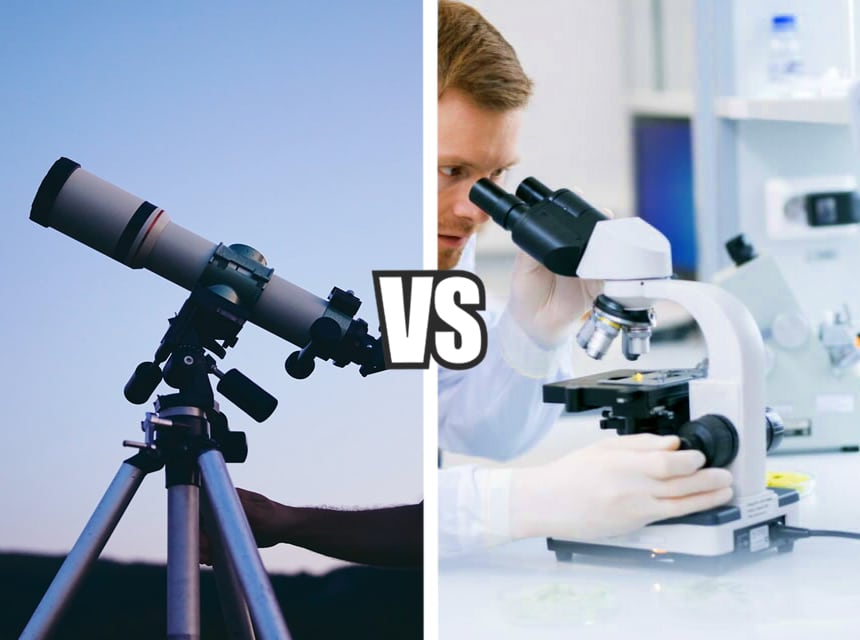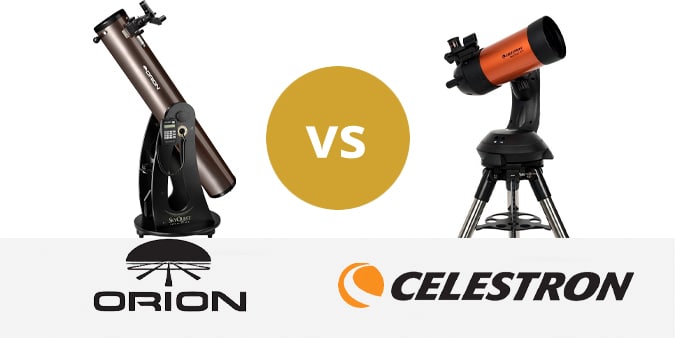

Do you think that the best Barlow lenses are easy to choose and buy? They are apparently not as a lot of people can’t seem to buy lenses they want to use for the long term. Instead, they are back in the market looking for other options as soon as their purchase arrives, and they realize it’s not what they want. However, choosing shouldn’t be as difficult as the situation above makes it out to be.
If you know all about the magnification, size, and the optics quality of the Barlow lens, deciding whether it’s worth your money should be a walk in the park. Notably, excellent optics guarantee image clarity. The magnification rating tells you how many more times your image is going to be enlarged. Finally, size notifies you of the compatibility with your telescope or lack thereof as well as how the two devices would fit together. These should all be in line with your needs, and if you tick all the right boxes, the best Barlow lenses, even from the list below, should be easy to pick.
Other features: 2-element fully-multicoated optical design, blackened lens edges
The Celestron 93326 Omni Barlow Lenses is our editor’s choice and one of the highest recommended picks of the day. This Barlow lens has a silver exterior, although that won’t matter to a lot of astronomers. However, some of you prefer matching the colors to those in your telescope.
Magnification on this Barlow lens is 2x, which means twice as much magnification from your telescope + eyepiece setup. Also, in this device are multi-coated lenses.
The multi-coated lenses in any optical device are instrumental in raising the quality of the imagery. Further, this is enhanced by the blackened edges. Again this particular detail ensures minimal reflections in the Barlow lens.
Notably, there are only two elements in this 2x Barlow lens. Additionally, the purchase comes with a 1.25” barrel. This barrel is compatible with 1.25” focusers and diagonals. As such, a matching size eyepiece will go well together with this device.
What we liked: Multi-coated optics in any optical device are a huge positive. Also, the blackened edges eliminate reflections, thereby helping improve images. Lastly, the compatibility with 1.25” eyepieces makes this lens usable with multiple telescope models.
What could be better: This product may not fit well on some telescopes.
Other features: 4-element fully multi-coated optics, 1.25” eyepiece adapter, 1.1” clear aperture
As for the Celestron 93436 Luminos Barlow Lens, you get a different magnification setting compared to the Celestron 93326 Omni Barlow Lenses. However, you should note from the names that they both come from the same source.
According to the 2” size depicted above for the Barlow, this may seem like it’s for a different class of telescopes in terms of eyepiece compatibility. However, it comes with a 1.25” eyepiece adapter, and that makes it compatible with 1.25” telescope setups as well.
Remember to confirm its compatibility with your telescope before purchase; otherwise, you may end up frustrated. This is done by noting the size of your eyepiece beforehand.
Additionally, this Barlow has the most optical elements of any option listed. All four of these optical elements are multi-coated, which you might have to thank if you like the image quality.
The Barlow has an aluminum body. Also, there is the brass compression ring included. This component’s job, in conjunction with the large thumbscrews, is to hold eyepieces in place.
What we liked: This Celestron model is compatible with 2” and 1.25” eyepieces thanks to its construction and the adapter included. The four multi-coated optic elements raise the bar in terms of image quality. Aluminum and brass construction is relatively impressive. Also, the thumbscrews and brass connection can help hold the Barlow and eyepiece in place as you observe the night sky. As for the magnification, only one other option listed offers higher statistics in this area.
What could be better: In comparison to other Barlow lenses, this pick isn’t very affordable.
Other features: two-element achromatic, camera adapter
The Levenhuk 44473 Barlow Lens isn’t a letdown in terms of features either. One might even see several similarity points between this Barlow lens for a reflector telescope and the Celestron 93326 Omni.
Top of the list of benefits is the 2x magnification that will add to your telescope’s capabilities. Making this possible are the two achromatic lens elements in the design of the Barlow.
The lenses don’t lead to any image aberrations, thanks to being fully multi-coated. In line with the large number of 1.25” eyepieces being sold alongside telescopes, the manufacturer has adopted this size for the Barlow. Consequently, this pick is compatible with a lot of the telescopes you might find in various stores.
If you already have a telescope at home, it might be good to look into the eyepiece size before settling on this Barlow. Lastly, this Barlow lens for astrophotography and basic astrology deserves praise for adding a camera adapter to the setup.
What we liked: The camera adapter expands the realm of possibility for this Barlow. Additionally, since most of you have 1.25” eyepieces, this Barlow will fit right into your setup. Another notable element is the achromatic and fully multi-coated lens elements that our team liked a lot. Lastly, when not using the Barlow lens, the two lens caps included will protect the optical elements.
What could be better: Incompatible with 2” eyepieces. Also, this Barlow can make poor visibility conditions seem even worse.
Other features: 3-element fully multi-coated design, rubber grip, hard anodized black finish
Our third Celestron pick of the day is the X-CEL 93529 Barlow Lens Telescope Eyepiece. A unique component of the Barlow lens for reflector telescopes is the three-element setup in the body of the purchase. Like other high-quality Barlows, featuring a multi-coated design is both helpful practically and raises the standing of the purchase.
Also, if you’re a fan of black finishes, you’ll see this Barlow as a favorite when the time comes to pick an option. Despite having three optical elements, the X-CEL 93529 still only manages 2x magnification.
Like the Celestron 93436 Luminos, this model has a brass pressure ring. This holds the eyepiece in place and does this without damaging the bezel in the telescope component. A 2-year Celestron Warranty may benefit buyers as well.
What we liked: The Celestron X-CEL 93529 having a two-year warranty is a big positive. We liked that it has three fully multi-coated glass elements. Lastly, the brass pressure ring is designed to be non-damaging to the telescope and eyepiece.
What could be better: A price reduction for this Barlow would make it accessible for more people
Other features: multi-coated, 2.5” long, 26mm clear aperture
The Meade 07273 Barlow Lens also deserves praise and a place on this top Barlow lenses for reflector telescopes list. You can use this pick as a beginner astronomer to extend the magnification range of your current telescope.
The lenses in this product make enough spherical and chromatic aberration corrections that the image quality left is top-notch. Also, the coating helps ensure light transmission and image contrast allow you to clearly view the night sky.
This meade 2x Barlow lens measures 2.5” in length. However, as you can see, compatibility is only guaranteed for 1.25” telescopes. Lastly, the 26mm clear aperture has a hand in ensuring bright images are observed through the eyepiece.
What we liked: We liked the 26mm clear aperture. This works together with the multi-coated lenses designed for eliminating most of the chromatic and spherical aberrations to ensure the images are worth your money.
What could be better: While steps have been taken to eliminate chromatic aberration, they are not 100% effective.
Other features: coated lens
An example of a Barlow lens that’s affordable is the Cassini 3x Barlow Coated option. Buyers can get this for less than $20.
Magnification in this pick is 3x, which is higher than even the Celestron 93436 Luminos Barlow Lens.
Notably, image quality may suffer a bit since the lenses are not fully multi-coated. However, some of the Barlow’s users may be content with the image quality regardless. After all, not many complaints have been lodged about it.
Like most other Barlow lenses listed, this pick will work with 1.25” telescope eyepieces.
What we liked: This Barlow lens is lowly priced. Despite this, it features more magnification than other lenses.
What could be better: With better coating on the lenses, the image quality could be even better.
With Barlow lens options increasing by the day, it is understandable that some of you find it difficult to differentiate between good ones and bad ones. It is not all doom and gloom since you can still get the best Barlow lenses without much hassle. If you’re uncertain of how to do it, the guide below can make it certain that things will go your way.
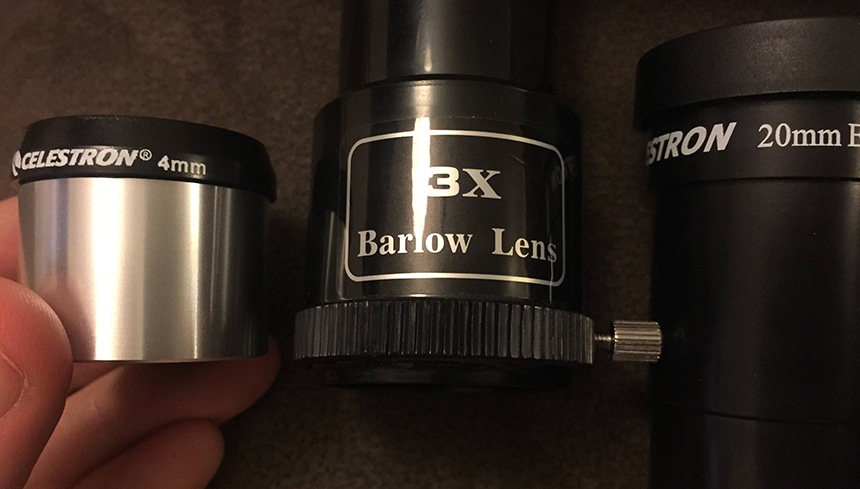
Barlow lenses are accessories that are often used in conjunction with telescopes. As such, if you have a telescope at home that you feel doesn’t have enough magnification, you can benefit from such a product. Depending on the make and model, the Barlow lens can increase the magnification in your telescope setup by between 2x-5x.
As we’ve mentioned above, Barlow lenses increase magnification severalfold in a telescope setup. Some of you may have also noticed that your telescopes don’t have the reach to view the astronomical bodies you want. In such a case, you can buy a Barlow lens as an accessory to help extend the reach rather than purchase a new telescope altogether.
As much as it may seem intimidating to choose a Barlow lens, it doesn’t have to be. It could be a process of simple steps, especially if you know what features to look for. Alone you might struggle to figure these things out. However, a breakdown of all features that might make or break the Barlow lens’s quality is given below. This makes choosing one simpler for you.
Some might tout the magnification as the most essential feature in a Barlow lens. We indeed hold it in high regard among the list of things you should look out for in Barlow lenses. You should decide early enough how much extra magnification you need.
Notably, your options are limited here, with the range being between 2x and 5x. However, even the 5x and 4x options are quite a rarity. 2x Barlow lenses are the most common and the most affordable. That said, the more reach you want, the higher the magnification you’ll choose.
As for the Barlow lenses list above, the highest magnification option you’ll get is the Cassini 3x Barlow Coated Telescope Lens. A keen look at the Barlow lens’ name will tell you how much magnification you can get from the product.
After confirming that you’re good with the magnification, it might do you good to check tube size as well. This is a crucial factor in helping decide whether the Barlow lens in question is worth paying for or not. Carelessness in this area can have you buying a product that is completely incompatible with the telescope you have at home.
Many Barlow lenses, with the Celestron 93326 Omni Barlow pick as an example, have 1.25” tubes. These lenses are thus compatible with 1.25” telescopes. However, a few telescopes and their eyepieces come in other sizes.
As for the Celestron 93436 Luminos Barlow Lens, it would cater well to a 2” eyepiece size. It also has a 1.25” eyepiece adapter that may be handy if your telescope is a 1.25” option. There is also the option of a 0.965” eyepiece, and you would have to buy a Barlow lens for that as well. That last option is quite uncommon.
Of course, you want better visibility of the astronomical objects when you set out to get a Barlow lens. Your efforts can be impeded by the optics if you’re not careful. Good optics will collect enough light to allow you to see the image as it is.
Bad optics, on the other hand, can introduce chromatic aberrations and other factors that would take the joy out of viewing the night sky. After all, the image quality will be terrible. Notably, the coating is one factor that makes or breaks the quality of the optics.
If the optical components are well coated, loss of light and reflections will be dramatically reduced. In the list of Barlow lenses above, you may have seen fully multi-coated, coated, and multi-coated options. All of these options differ in the layers of coating used, as well as the number of optical elements covered. A guide to differentiating between them is provided below.
Coated optics may have at least one layer of coating on at least one of the lens elements. Multi-coated optics take things a step further and introduce multiple layers of coating to at least one of the lens elements. The final type being fully multi-coated, is almost self-explanatory. Multiple layers of coating are used in all lens elements in the product.
If you’re still uncertain of how to pick, we would advise going for more layering in terms of the coating. As such, fully multi-coated lens elements will provide the best image quality. That being said, the image quality can still be reduced by other factors in the construction of the product.
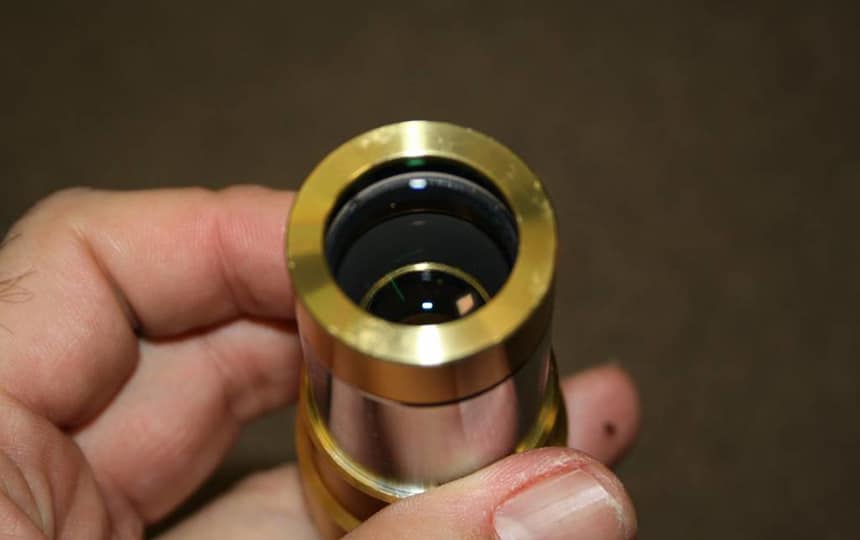
Note that the Barlow you buy can negatively affect the eye relief leading to other problems if you’re not careful. One example is if you’re using a long focal length eyepiece in your telescope. This results in a significant increase to the eye relief past the point that the product was designed for. This would lead to vignetting, where the outer parts of the field of view would no longer be discernible or visible.
However, if you position the telescope well enough, you should be okay with seeing your target astronomical object in the middle of your field of view.
The Celestron 93326 Omni Barlow Lenses has blackened lens edges worth mentioning since they improve image quality. This is unique to the Barlow lens model on the above list. Further, the Celestron 93436 Luminos Barlow Lens has a lens adapter allowing it to be compatible with two varying eyepiece sizes.
A third example of a Barlow lens feature that you might find in a few options is a camera adapter such as in the Levenhuk 44473 Barlow Lens. These wouldn’t qualify as standard Barlow lens features. However, you might appreciate having them all the same.
Notably, magnification is calculated by dividing the focal length of the telescope by the focal length of the eyepiece. Since the Barlow lens decreases the eyepiece’s focal length, this means an increase in magnification overall.
If you picked the right diameter for your Barlow, this should be easy as pie. Remember, you might have to fasten the eyepiece to the Barlow using the thumbscrew provided for added stability.
The Celestron 93326 Omni Barlow Lenses take the cake as our top Barlow lens pick. It has high-quality optical elements that are coated to provide better images. The blackened lens edges take image quality a notch higher as well.
Some would say the Celestron 93436 Luminos Barlow Lens is better. The price of the Barlow seems a bit high. However, when you pay for this pick, you can use it with 2” and 1.25” eyepieces as well. If you add the aperture and optical elements included in this Barlow lens, the price will seem more than worth it.
The Levenhuk 44473 Barlow Lens doesn’t fall far behind in the image quality department. Also, it provides a camera adapter so you can record what you see in the sky. These three Barlows are our favorites out of the top six picks above.
